
Highlights
- Ranking receiver greatness involves considering accomplishments, accolades, and separating behavior from performance.
- Longevity and body of work take precedence. Prime is considered as well, but those who sustain success are rewarded.
- GIVEMESPORT presents the 15 best wid receivers in NFL history.
Today’s NFL is all about the passing attack, and for every throw, there has to be someone on the other end to make the catch. For every great quarterback, there’s a receiver who helped make it all possible. Peyton Manning had Marvin Harrison, Joe Montana had Jerry Rice, and Tom Brady had Randy Moss.
To say these quarterbacks needed a Hall of Fame caliber receiver to be productive players may be a stretch, but without having that elite weapon, they may never have reached their full potential.
The same can be said about many of the quarterbacks today. Is it just a coincidence that Josh Allen started to look like an MVP the second the Buffalo Bills traded for Stefon Diggs? Or the fact that Jalen Hurts took leaps as a passer once he got A.J. Brown as a target? It’s become increasingly evident that getting a high-quality receiver is paramount to maximizing quarterback play.
There is an innate quality in star receivers to be the center of attention. If their on-field impact somehow goes unnoticed, their theatrics certainly won’t. From rowdy touchdown celebrations to sideline outbursts and cryptic posts on social media, the position’s passion for the game and desire to be great is indubitable.
Ranking these players involves separating the art from the artists, also known as separating their behavior from their performance. Some were questionable teammates, others questionable people, but on this list, on-field performance trumps everything.
Accomplishments and accolades take precedence as they are the best indicators of a player’s dominance. With the difference in eras, pure box score stats aren’t the most reliable metrics. How a player stacked up against others from their era tells more about an individual’s performance rather than cumulative numbers.
Additionally, the objective of this list is to rank the best receivers in NFL history based on their careers. This means that longevity and career body of work are heavily weighted. Prime performance is still emphasized, but steady players with sustained success will find themselves higher on the list. Pure talent certainly helps, but the talent needs to translate into historically great performance to meet the criteria for this list.
Here are the 15 greatest NFL wide receivers of all time.
15 Best Running Backs in NFL History, Ranked
The running backs of today have a long way to go to be held in the same breath as those on this list. Check out GIVEMESPORT’s top 15 RBs.
15 Andre Johnson
The Class of 2024 Hall of Fame member narrowly makes the list
The recent Hall of Fame inductee snags the final spot on this list. This decision was no easy one, as Johnson’s admission comes over multiple Hall of Famers. Johnson’s edge comes down to two factors. Firstly, Johnson had one of the highest peaks of the 2000s, recording consecutive 1,500 receiving-yard seasons, leading the league both years. Secondly, Johnson had an all-encompassing skillset that allowed him to win in several ways.
|
Andre Johnson Career Stats |
||
|---|---|---|
|
Stat |
Regular Season |
Playoffs |
|
Games |
193 |
4 |
|
Receptions |
1,062 |
25 |
|
Receiving Yards |
14,185 |
358 |
|
Yards Per Reception |
13.4 |
14.3 |
|
Receiving Touchdowns |
70 |
1 |
|
Receiving Yards Per Game |
73.5 |
89.5 |
|
Fumbles |
10 |
0 |
Johnson was a thicker receiver who used his mass to come down with catches in traffic. He had a lot more than just a big frame, though. Johnson possessed 4.4 speed, making him a weapon after the catch. Calvin Johnson’s arrival made the elder Johnson’s time as the league’s most physically dominant receiver short-lived. Nevertheless, his peak was special.
There was very little he couldn’t do on the field. He had the size and toughness to run a breaking route into the teeth of the defense while still having the athleticism to win vertically and after the catch.
As the NFL’s newest franchise, the Houston Texans needed a face of the franchise, someone with notoriety and respect across the league. Johnson proved to be just that and was the franchise’s first superstar.
14 Tim Brown
Originially a special teamer, Brown developed into one of the best receivers of his time
Tim Brown first made his name as a return man. He led the league in kickoff return yardage and was named to the Pro Bowl as a rookie. Over time, Brown expanded his game and solidified himself as an elite wide receiver. Once he was promoted to full-time starter, Brown never looked back. He made five consecutive Pro Bowls and topped 1,100 receiving yards in each of those seasons.
|
Tim Brown Career Stats |
||
|---|---|---|
|
Stat |
Regular Season |
Playoffs |
|
Games |
255 |
12 |
|
Receptions |
1,094 |
45 |
|
Receiving Yards |
14,934 |
581 |
|
Yards Per Reception |
13.7 |
12.9 |
|
Receiving Touchdowns |
100 |
3 |
|
Receiving Yards Per Game |
58.6 |
48.4 |
|
Fumbles |
33 |
1 |
At the core of Brown’s success was consistency. He recorded nine consecutive 1,000-yard seasons, caught 75 or more passes in 10, and at least five touchdowns in 11. Brown was a model of dependability and a steady force on the then Oakland Raiders offense.
What stops Brown’s ranking from being higher is his relatively low peak. Outside of 1997, when he led the NFL in receptions, Brown never led the league in any of the three major statistical categories, nor was he a first-team All-Pro. Nevertheless, Brown’s career stability is admirable and makes inclusion on this list fully deserved.
13 Julio Jones
Jones deserves recognition for being one of the best receivers of his time
One of the hardest challenges to overcome in constructing this list is to avoid recency bias. Receiving records seem to fall every year, but is this a reflection of the quality of wide receivers or how the game is played today?
The true answer probably lies between the two. The average wide receiver is asked to do more than he was 25 years ago, forcing them to have a more complete skillset. On the other hand, the game has become more pass-centric, and many of the rules implemented to protect players directly favor the offense.
Julio Jones is the only active player on this list. Even in a league where numbers have become inflated, Jones’s greatness is indisputable. From 2014 to 2019, he registered 9,388 receiving yards, giving him a per-season average of 1,565. In that time, he led the league in receiving yards twice and receiving yards per game three times.
|
Julio Jones Career Stats |
||
|---|---|---|
|
Stat |
Regular Season |
Playoffs |
|
Games |
166 |
11 |
|
Receptions |
914 |
77 |
|
Receiving Yards |
13,703 |
992 |
|
Yards Per Reception |
15.0 |
12.9 |
|
Receiving Touchdowns |
66 |
7 |
|
Receiving Yards Per Game |
82.5 |
90.2 |
|
Fumbles |
11 |
1 |
Jones is a player whose physical gifts led to the rest of his game going overlooked. Fans see a 6’3″, 220-pound monster who ran a 4.39 40-yard dash with a broken foot and have trouble focusing on anything else. In their defense, Jones’ physical dominance was ubiquitous. Everything he did was so powerful and explosive that it was easy to fixate on that piece of his game.
In addition to his athleticism, Jones had superb body control and was an expert at high-pointing the ball and adjusting his body in midair. This made his already massive catch radius even larger. It would take a terrible misfire for Jones not to at least have a chance at reeling the ball in.
In his prime, Jones was a smaller receiver trapped in a big man’s body. He shouldn’t have had the change of direction and footwork he did at his size. As Jones’ career winds down, fans must not forget the electrifying player he was with the Atlanta Falcons. Had it not been for injuries hampering the tail end of his career, he would certainly be higher on this list.
12 Isaac Bruce
Bruce was one of the most productive receivers of all time
Isaac Bruce will forever be known for his role on the legendary 1999 St. Louis Rams team, which featured Kurt Warner and Marshall Faulk, who recently made GIVEMESPORT’s list of the top 15 best running backs of all time.
Bruce was instrumental in his team’s efforts, with team highs in receiving yards and touchdowns. What is less known is how productive he was before the arrival of his Hall of Fame teammates. Bruce’s career season came in 1995 with Chris Miller throwing him the football. In 1996, Bruce caught passes from Tony Banks en route to a league-high 1,338 receiving yards.
|
Isaac Bruce Career Stats |
||
|---|---|---|
|
Stat |
Regular Season |
Playoffs |
|
Games |
223 |
9 |
|
Receptions |
1,024 |
44 |
|
Receiving Yards |
15,208 |
759 |
|
Yards Per Reception |
14.9 |
17.3 |
|
Receiving Touchdowns |
91 |
4 |
|
Receiving Yards Per Game |
68.2 |
84.3 |
|
Fumbles |
16 |
0 |
Bruce was a surgical route runner with a superb burst and change of direction. He didn’t have the long speed to blow by defenders, but he had just enough twitch to get them out of position.
In the years following the Greatest Show on Turf, Bruce did just as he did before: produce. He still had enough shake in his 30s to get open and was a productive receiver as late as his age-36 season.
Jerry Rice, Larry Fitzgerald, Terrell Owens, and Randy Moss are the only players with more career receiving yards than Bruce. He may not be held in the same regard as the top four, but leaving him out of the conversation entirely would be indefensible.
11 Cris Carter
Carter’s late-career breakout leaves him right outside the top 10
Cris Carter needing six years before his Hall of Fame induction was nothing short of an abomination. Carter is fourth all-time in receiving touchdowns, sixth in receptions, and 13th in receiving yards.
When the Minnesota Vikings drafted Randy Moss in the 1998 NFL Draft, many questioned how the rookie would co-exist with the already-established Carter. All concerns were quickly dashed as both players topped 1,000 yards and formed one of the greatest receiver tandems of all time.
|
Cris Carter Career Stats |
||
|---|---|---|
|
Stat |
Regular Season |
Playoffs |
|
Games |
234 |
14 |
|
Receptions |
1,101 |
63 |
|
Receiving Yards |
13,899 |
870 |
|
Yards Per Reception |
12.6 |
13.8 |
|
Receiving Touchdowns |
130 |
8 |
|
Receiving Yards Per Game |
59.4 |
62.1 |
|
Fumbles |
17 |
2 |
While Carter benefited from Moss’s presence in the latter stages of his career, he also showed that he could excel in a larger role. From 1993-2000, Carter made eight consecutive Pro Bowls and logged at least 1,000 receiving yards each year. During this time, he also led the league in touchdowns on three separate occasions.
Progression isn’t always linear, and Carter is a prime example of that. At 27, he didn’t have a single Pro Bowl selection or 1,000-yard season, but Carter’s breakout proved to be worth the wait. For eight years, he was an elite performer and produced in multiple roles.
10 Antonio Brown
Brown’s off-field shenanigans have distracted fans from what was a legendary career
While the late stages of Antonio Brown’s career were overshadowed by his erratic behavior, his time with the Pittsburgh Steelers featured some of the highest-level play seen from the position this century.
Brown’s game highlighted the importance of details. He wasn’t big, nor was he extraordinarily fast or explosive, yet he dominated defenses, winning at all three levels. Brown won with precision. He ran crisp routes with little wasted movement and could change speed and direction at will.
|
Antonio Brown Career Stats |
||
|---|---|---|
|
Stat |
Regular Season |
Playoffs |
|
Games |
146 |
13 |
|
Receptions |
928 |
59 |
|
Receiving Yards |
12,291 |
918 |
|
Yards Per Reception |
13.2 |
15.6 |
|
Receiving Touchdowns |
83 |
6 |
|
Receiving Yards Per Game |
84.2 |
70.6 |
|
Fumbles |
15 |
0 |
Covering Brown was a daunting task, as he could create separation with the slightest move. Brown also had an innate gift for spatial awareness, mastering the toe drag and regularly contorting his body to make impossible catches on the sideline.
Brown seemed to know exactly where he was on the field at all times, even in the scramble drill. He also had a great feel for where defenders were and found openings against every coverage. Generally, quarterbacks want big-body receivers with massive catch radiuses. Brown was an exception to this. While small, he could bail out quarterbacks with his knack for getting open and body control.
Brown’s exile from the league had nothing to do with his performance. He was still a highly capable receiver and, at times, looked like the best pass-catcher on a team that featured Mike Evans and Chris Godwin. His antics reached a point where teams felt he was uncontrollable and a liability in the media.
At 35, Brown has likely played his final snap in the NFL. His talent on the field was incredible, but his actions on and off the field make his legacy a highly complicated one.
9 Calvin Johnson
Johnson’s early exit didn’t stop him from solidifying himself as one of the greats
The term “freak of nature” is often overused in sports. In the case of Calvin Johnson, though, this description almost sells him short. The man nicknamed Megatron reached a level of physical dominance that few could match and instilled fear into defensive backs across the league.
From a size standpoint, Johnson could’ve passed as a tight end. He was a behemoth of a receiver, weighing 240 pounds and was far too physical for cornerbacks to handle. Johnson’s athletic profile, however, was more akin to a receiver about 40 pounds lighter.
|
Calvin Johnson Career Stats |
||
|---|---|---|
|
Stat |
Regular Season |
Playoffs |
|
Games |
135 |
2 |
|
Receptions |
731 |
17 |
|
Receiving Yards |
11,619 |
296 |
|
Yards Per Reception |
15.9 |
17.4 |
|
Receiving Touchdowns |
83 |
2 |
|
Receiving Yards Per Game |
86.1 |
148.0 |
|
Fumbles |
14 |
0 |
Johnson led the league in receptions, receiving yards, and receiving touchdowns for at least one season and currently holds the single-season receiving yards mark with 1,964. He currently sits second in career receiving yards per game with 86.1, trailing only Justin Jefferson.
Much like Barry Sanders, Johnson walked away from football early. At 30 years old, he was still among the best in the game and was coming off a 1,214-yard, nine-touchdown season. But between nagging injuries and the Detroit Lions’ status as non-contenders, Johnson had little incentive to continue playing.
Despite all of his accomplishments, fans have lamented Johnson’s career. He was on pace to be one of the greatest statistical receivers ever, and his premature retirement makes what he would’ve accomplished an unknown.
8 Steve Largent
Largent overcame an underwhelming physical profile to become one of the most accomplished receivers ever
Steve Largent retired from football as one of the most accomplished wide receivers of all time. He once held numerous receiving records, including most career receptions, most career receiving yards, most career receiving touchdowns, and most consecutive games with a reception.
|
Steve Largent Career Stats |
||
|---|---|---|
|
Stat |
Regular Season |
Playoffs |
|
Games |
200 |
7 |
|
Receptions |
819 |
23 |
|
Receiving Yards |
13,089 |
434 |
|
Yards Per Reception |
16.0 |
18.9 |
|
Receiving Touchdowns |
100 |
4 |
|
Receiving Yards Per Game |
65.4 |
62.0 |
|
Fumbles |
17 |
0 |
Though these records didn’t stand the test of time, Largent’s greatness was undeniable. In a nutshell, his game was every cliché used to describe an undersized receiver. He was crafty, technically sound, and tough as nails.
Before receiver gloves were widely used, pass catchers needed to rely solely on their hands to corral the ball. This is what separated Largent from his peers. He didn’t need any help holding onto the football, as his soft hands were more than enough.
On the surface, there wasn’t anything overly impressive about Largent’s game, but that didn’t stop him from rewriting the record books. Largent was the perfect receiver for his time. He may not have had the athletic profile to succeed in today’s NFL, but as far as the 1970s and 80s go, he had the requisite skills to dominate.
7 Marvin Harrison Sr.
The ying to Peyton Manning’s yang, Harrison helped the great quarterback reach his MVP form
Before his son was one of the highest-rated receiving prospects in NFL Draft history, it was his father who tormented NFL defenses on a weekly basis. Marvin Harrison Sr. and Peyton Manning formed one of the most prolific quarterback-receiver tandems in league history.
Both players were not only highly skilled, but were students of the game. There was a level of trust between Manning and Harrison Sr. that few quarterbacks had in their top receivers.
|
Marvin Harrison Sr. Career Stats |
||
|---|---|---|
|
Stat |
Regular Season |
Playoffs |
|
Games |
190 |
16 |
|
Receptions |
1,102 |
65 |
|
Receiving Yards |
14,580 |
883 |
|
Yards Per Reception |
13.2 |
13.6 |
|
Receiving Touchdowns |
128 |
2 |
|
Receiving Yards Per Game |
76.7 |
55.2 |
|
Fumbles |
12 |
3 |
Manning would often begin his throwing motion before Harrison Sr. had even come out of his break, knowing his receiver would be where he needed him to be. Harrison Sr.’s legacy suffers from his modesty. He wasn’t the personality that others of his time were. Despite his many accomplishments, Harrison Sr. seldom made things about himself, making him less memorable in the media than some of his more pompous counterparts.
Still, Harrison Sr.’s entry on this list needs no justification. His prime featured eight consecutive 1,100-receiving-yard seasons, four consecutive 100-reception seasons, and eight consecutive double-digit receiving touchdown seasons. As his son embarks on his own NFL journey, Harrison Sr.’s legacy lives on.
6 Larry Fitzgerald
Fitzgerald was one of the most reliable and consistent receivers ever
Larry Fitzgerald’s career dropped passes: 29. Larry Fitzgerald career tackles: 40. Yes, as a wide receiver, Fitzgerald had more tackles than he did drops in his NFL career. If that doesn’t underscore reliability, then what does?
Fitzgerald was as sure-handed as they came, recording five 100-reception seasons. Even in his earlier years, he possessed the feel of a savvy vet, finding soft spots in zone coverage and using his leverage to get separation.
|
Larry Fitzgerald Career Stats |
||
|---|---|---|
|
Stat |
Regular Season |
Playoffs |
|
Games |
263 |
9 |
|
Receptions |
1,432 |
57 |
|
Receiving Yards |
17,492 |
942 |
|
Yards Per Reception |
12.2 |
16.5 |
|
Receiving Touchdowns |
121 |
10 |
|
Receiving Yards Per Game |
66.5 |
104.7 |
|
Fumbles |
13 |
1 |
A departure from the flare typically associated with the position, Fitzgerald’s game was more blue-collar. He was a bigger receiver who lined up on the outside as well as in the slot and relied on his football IQ just as much as his physical traits.
As many of his contemporaries grew old and regressed in their 30s, Fitzgerald’s greatest weapon, his mind, was as strong as ever. This cerebral approach saw Fitzgerald churn out three consecutive 100-reception seasons in his 30s.
He wasn’t as dynamic as others, but his consistency and dependability made him one of the most successful receivers in league history. Fitzgerald trails only Jerry Rice in career receptions and receiving yards.
5 Lance Alworth
Alworth helped revolutionize the pass game
Professional athlete nicknames typically involve a reference to something ferocious or savage. However, in the case of Lance Alworth, coaches settled on “Bambi.” The name fit the wide receiver like a glove and fully captured his uniqueness.
Alworth moved with such speed and grace that his game was more reminiscent of a deer rather than a predatory creature. Although Alworth moved like a fawn, when it came to vanquishing defenses, he was as vicious and ruthless as a carnivore.
|
Lance Alworth Career Stats |
||
|---|---|---|
|
Stat |
Regular Season |
Playoffs |
|
Games |
136 |
7 |
|
Receptions |
542 |
16 |
|
Receiving Yards |
10,266 |
292 |
|
Yards Per Reception |
18.9 |
18.3 |
|
Receiving Touchdowns |
85 |
3 |
|
Receiving Yards Per Game |
75.5 |
41.3 |
|
Fumbles |
5 |
0 |
Alworth’s blazing speed made him one of the greatest deep threats of all time, finishing his career with a whopping 18.9 yards per reception. At a time when quarterbacks dropped back sparingly, Alworth didn’t need high volume to be a game-breaker. He recorded seven consecutive 1,000-receiving-yard seasons, an unheralded feat for his time.
A seven-time Pro Bowler, six-time All Pro, and a one-time Super Bowl and AFL champion, Alworth was too spectacular to leave off the list. The recent influx of talent at the receiver position made some newer names enticing, but no amount of recency bias changes Alworth’s greatness.
4 Don Hutson
Hutson dominated the game unlike anyone before
Don Hutson was by far the most challenging player to rank, given the era he played in. Born in 1913, the NFL Hutson played in is incomparable to the league we know today. There was no West Coast offense or full-field reads. In fact, the game’s rules discouraged teams from airing it out. One such example is an incomplete pass that was untouched by either team, resulting in a turnover regardless of the down.
As one might imagine, teams were tentative at throwing the ball. Without context, Hutson’s stats look unimpressive, but for his time, he was unstoppable. In his 11 years, Hutson led the league in receiving yards seven times, receptions eight times, and touchdowns nine times. He led the league in all three statistical categories on five occasions.
|
Don Hutson Career Stats |
||
|---|---|---|
|
Stat |
Regular Season |
Playoffs |
|
Games |
116 |
5 |
|
Receptions |
488 |
10 |
|
Receiving Yards |
7,991 |
163 |
|
Yards Per Reception |
16.4 |
16.3 |
|
Receiving Touchdowns |
99 |
1 |
|
Receiving Yards Per Game |
68.9 |
32.6 |
|
Fumbles |
1* |
0* |
|
*Fumbles were not recorded as stats until 1945 |
||
During Hutson’s time in the NFL, receivers were fighting for second place. There was no one in the same stratosphere as the Green Bay Packers’ speedster. To many, it felt as though he was playing a different sport from everyone else, and in a way, he was.
Hutson was one of the game’s first vertical threats, and while he wasn’t the only one to change how the position was played, he was certainly one of the most influential.
Hutson retired an eight-time All-Pro and three-time champion. The Green Bay legend could be as high as the top spot or even off this list entirely, depending on the weight given to the era. With additional factors considered, Hutson falls in between the two extremes.
3 Terrell Owens
The polarizing Owens’ game outweighed his baggage
When discussing wide receiver antics, there’s no better example than Terrell Owens. He was the ultimate showman, looking for an opportunity to make a spectacle any chance he had. From his driveway workouts to posing on the Dallas Cowboys’ star, Owens’ shenanigans act as core memories from his career.
|
Terrell Owens Career Stats |
||
|---|---|---|
|
Stat |
Regular Season |
Playoffs |
|
Games |
219 |
12 |
|
Receptions |
1,078 |
54 |
|
Receiving Yards |
15,934 |
751 |
|
Yards Per Reception |
14.8 |
13.9 |
|
Receiving Touchdowns |
153 |
5 |
|
Receiving Yards Per Game |
72.8 |
62.6 |
|
Fumbles |
11 |
2 |
Owens personality, though frustrating to many, was perfect for the receiver position. He was a bold free spirit. This mindset, coupled with his freakish athleticism, made him a frightening receiver.
Following in the footsteps of Jerry Rice, Owens proved to be the next great San Francisco 49ers wideout. As his target share increased, Owens’ production skyrocketed. He made three consecutive All-Pro first-teams and hauled in 42 touchdowns in that time.
While Owens’ personality rubbed some teammates and coaches the wrong way, no one could question his toughness and will to win. In Super Bowl 39, Owens returned just seven weeks after surgery for a broken leg and recorded nine receptions for 122 yards in a loss to the New England Patriots. Though the Philadelphia Eagles came up short, Owens’ performance showed his commitment and toughness.
After his tenure with the 49ers, Owens bounced around the league with stints in Philadelphia, Dallas, Buffalo, and Cincinnati. But while his environment was constantly changing, Owens’ impact didn’t. He was a bonafide difference-maker and could thrive in various roles and offenses.
2 Randy Moss
Moss was arguably the most physically dominant receiver of all time
Going into the 1998 NFL Draft, there was no greater enigma than Randy Moss. His character repelled many teams, but even his staunchest critics couldn’t deny the scintillating talent he had. In retrospect, Moss’s slide to the 21st pick in the draft illustrates how teams can oftentimes overthink scouting. He could be a diva, but that didn’t stop him from being one of the greatest receivers of all time.
|
Randy Moss Career Stats |
||
|---|---|---|
|
Stat |
Regular Season |
Playoffs |
|
Games |
218 |
15 |
|
Receptions |
982 |
54 |
|
Receiving Yards |
15,292 |
977 |
|
Yards Per Reception |
15.6 |
18.1 |
|
Receiving Touchdowns |
156 |
10 |
|
Receiving Yards Per Game |
70.1 |
65.1 |
|
Fumbles |
16 |
0 |
Moss’s physical talent simply wasn’t fair. He was 6’4″, 210 pounds, yet ran in the low 4.3s and could jump out of the stadium. His size and explosiveness made him an unstoppable vertical threat. He could slip by defensive backs with ease and bully them at the catch point.
Throughout his career, Moss was a touchdown magnet, leading the league in receiving touchdowns on five occasions. Most notably, in 2007, Moss teamed up with Brady and New England, which led to both breaking single-season touchdown records. Moss hauled in 23 scores and finished the year with 1,493 yards.
Most NFL players are rather forgettable, leaving the league as mere footnotes. Only a select few live on for years and decades following their retirement. Moss’s legacy goes a step further. He not only has a name that resonates with football fans of all ages, but also his own verb attached to his name (Ex: You got mossed).
Moss wasn’t the first receiver to make contested catches or overpower defenders, but no one quite did it as masterfully as him. His blend of size and explosiveness gave these plays a new meaning. Much like Kobe Bryant’s fadeaway, these catches became so iconic that they became part of his brand and identity. Today’s generation of youth football players are too young to have witnessed Randy Moss’s prime, but they all know what it means to “Moss” someone.
1 Jerry Rice
Rice’s accomplishments make him the greatest wide receiver of all time
Putting anyone other than Jerry Rice at the top of this list would’ve been a travesty. His numbers, accolades, and reputation speak for themselves. Rice was never the physical specimen that guys like Randy Moss or Terrell Owens were, but his technical ability and feel for the game were second to none.
Rice’s emphasis on skill and technique over power and speed allowed his game to age quite gracefully. While most of his peers fizzled out in their mid-to-late 30s, Rice was still flourishing, topping 1,200 receiving yards in his age-40 season.
|
Jerry Rice Career Stats |
||
|---|---|---|
|
Stat |
Regular Season |
Playoffs |
|
Games |
303 |
29 |
|
Receptions |
1,549 |
151 |
|
Receiving Yards |
22,895 |
2,245 |
|
Yards Per Reception |
14.8 |
14.9 |
|
Receiving Touchdowns |
197 |
22 |
|
Receiving Yards Per Game |
75.6 |
77.4 |
|
Fumbles |
27 |
3 |
Of Rice’s numerous achievements and records, his ten first-team All-Pro selections in 11 years stick out. Only Jim Otto, whose career began before the Super Bowl, has as many. Despite the attention he garnered from opposing defenses, Rice was inevitable and an unstoppable force defenses could only hope to contain.
Whereas most of the passing records from Rice’s time have fallen, many of his receiving records remain intact, a testament to his transcendence. To put Rice’s 22,895 career receiving yards into perspective, Ja’Marr Chase would need to maintain his per-season average for the next 16 years to top it.
Rice is a statistical outlier whose career numbers and achievements make other greats look pedestrian in comparison. He’s unquestionably the greatest receiver of all time and possibly the greatest football player ever, too.
All stats courtesy of Pro Football Reference unless stated otherwise.
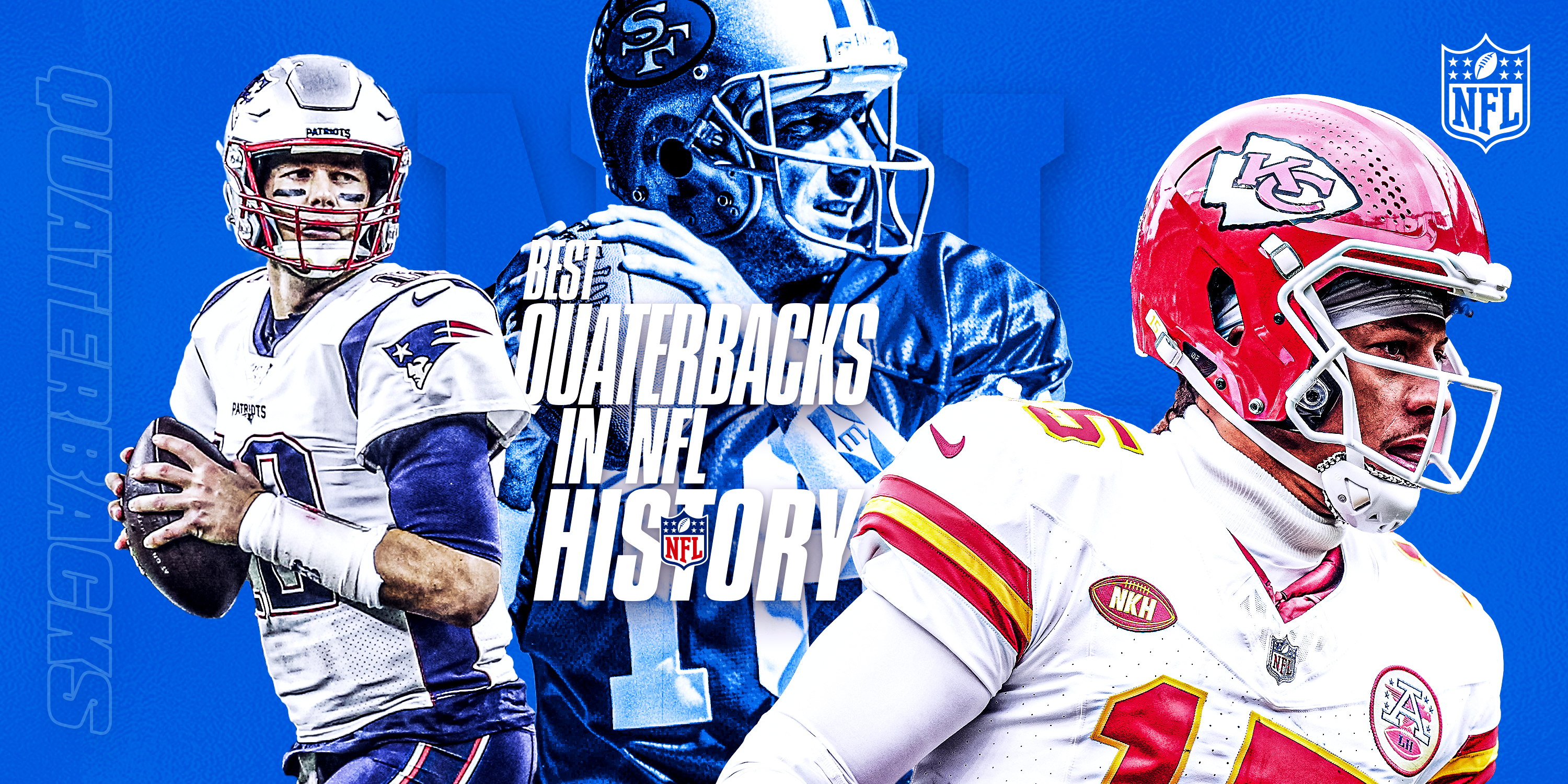
15 best quarterbacks in NFL history, ranked
Patrick Mahomes isn’t yet the best quarterback in NFL history, but he’s rapidly climbing the list. Check out GIVEMESPORT’s top 15 QBs.

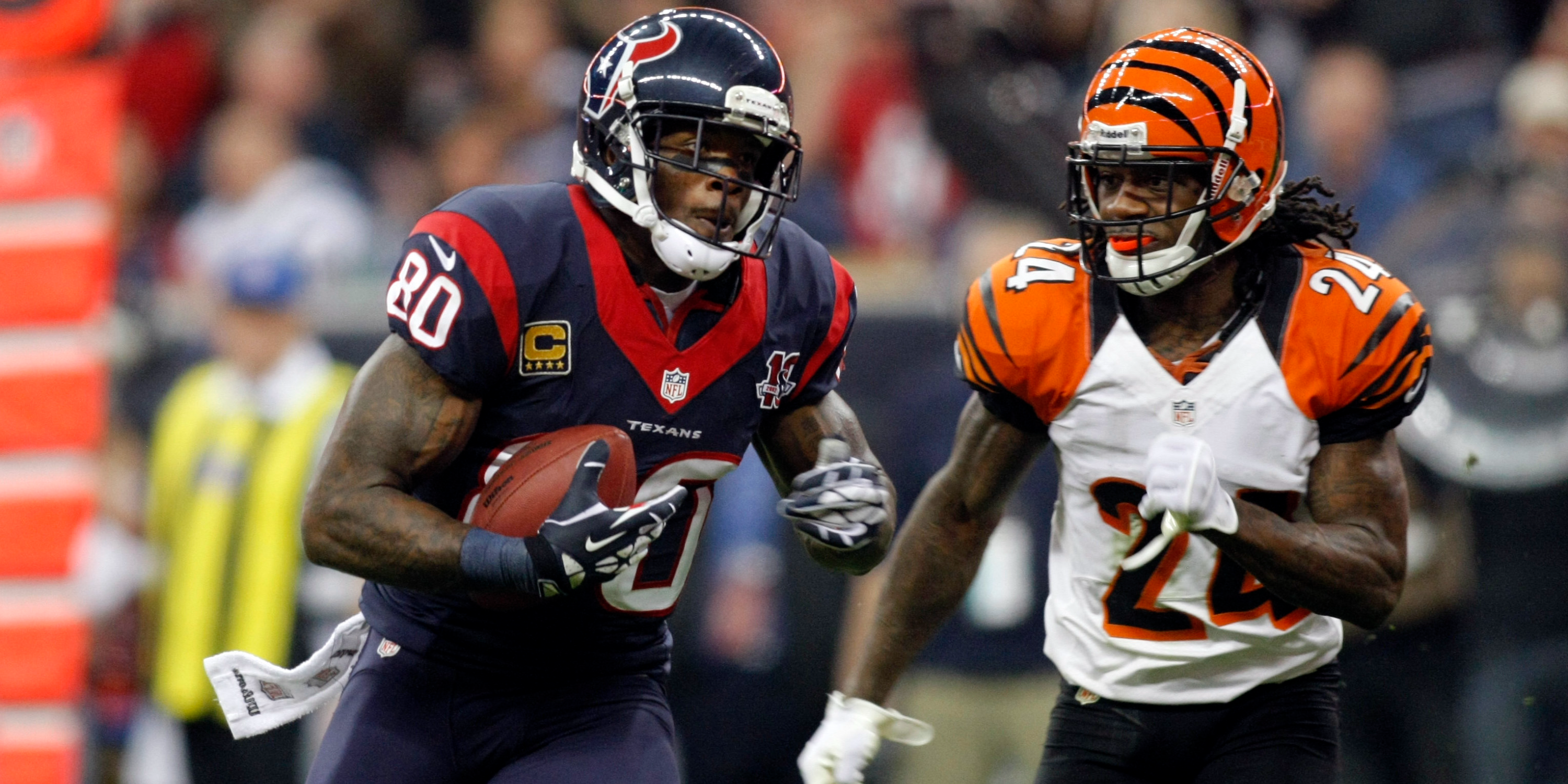
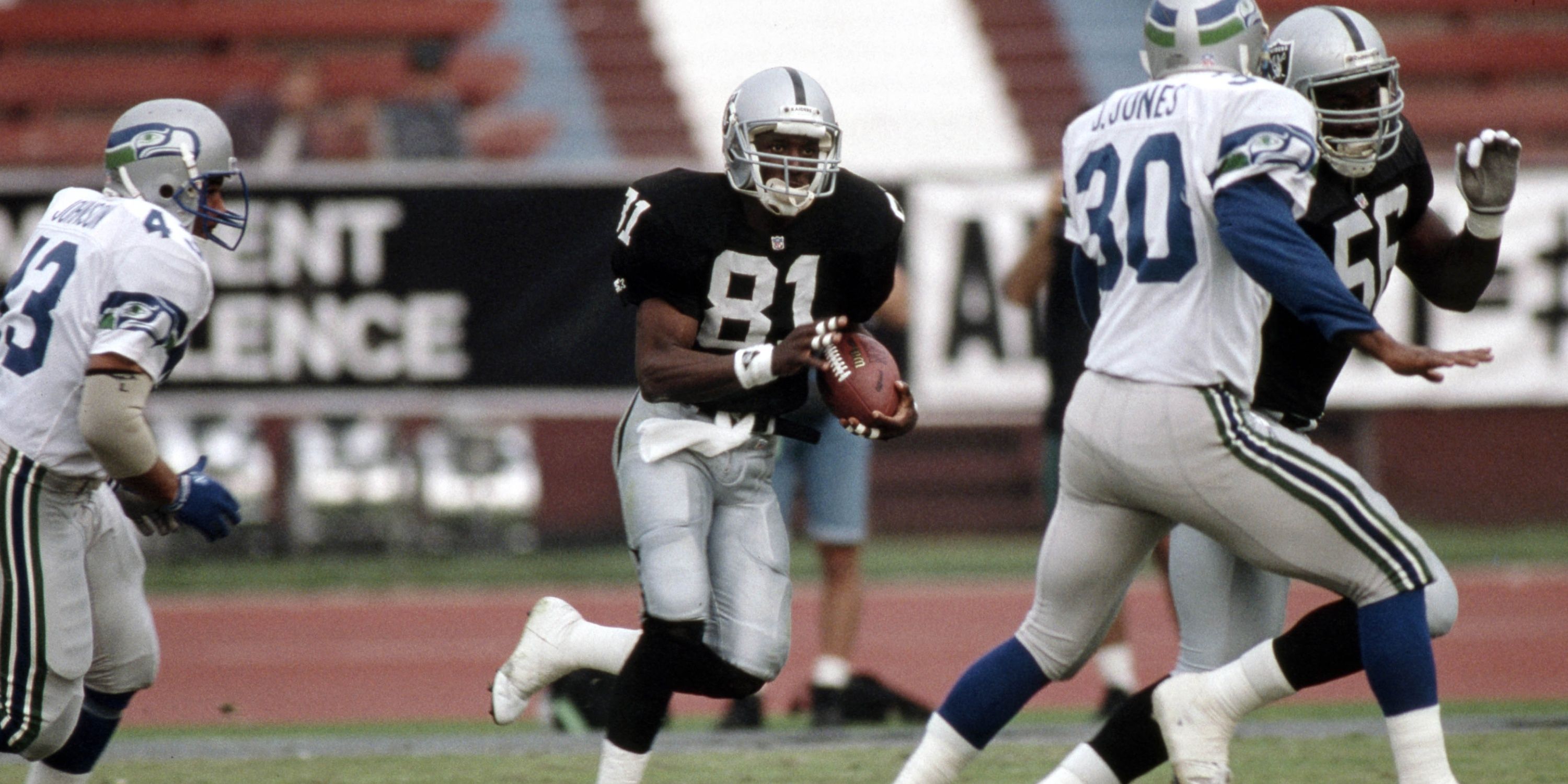
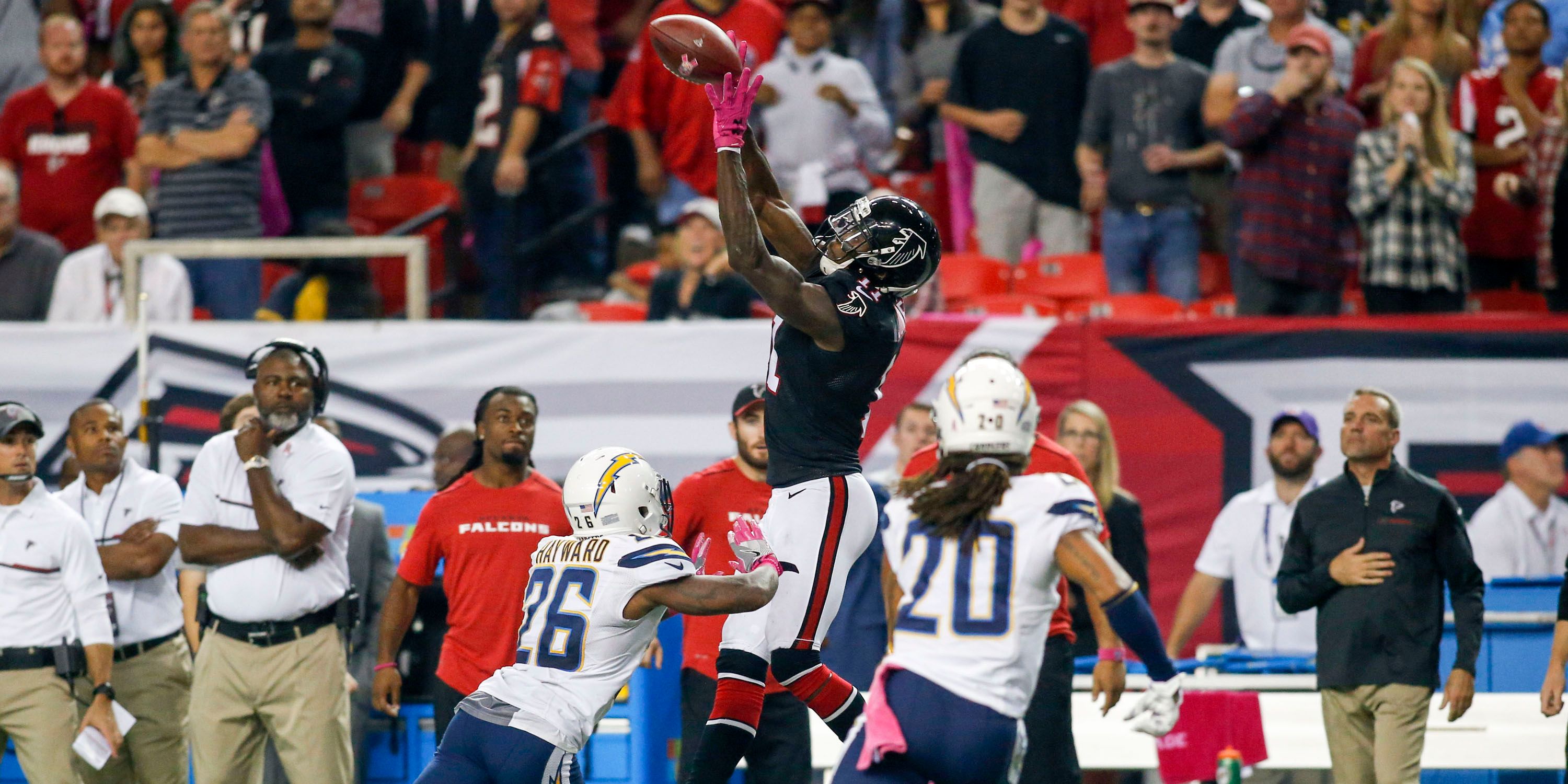
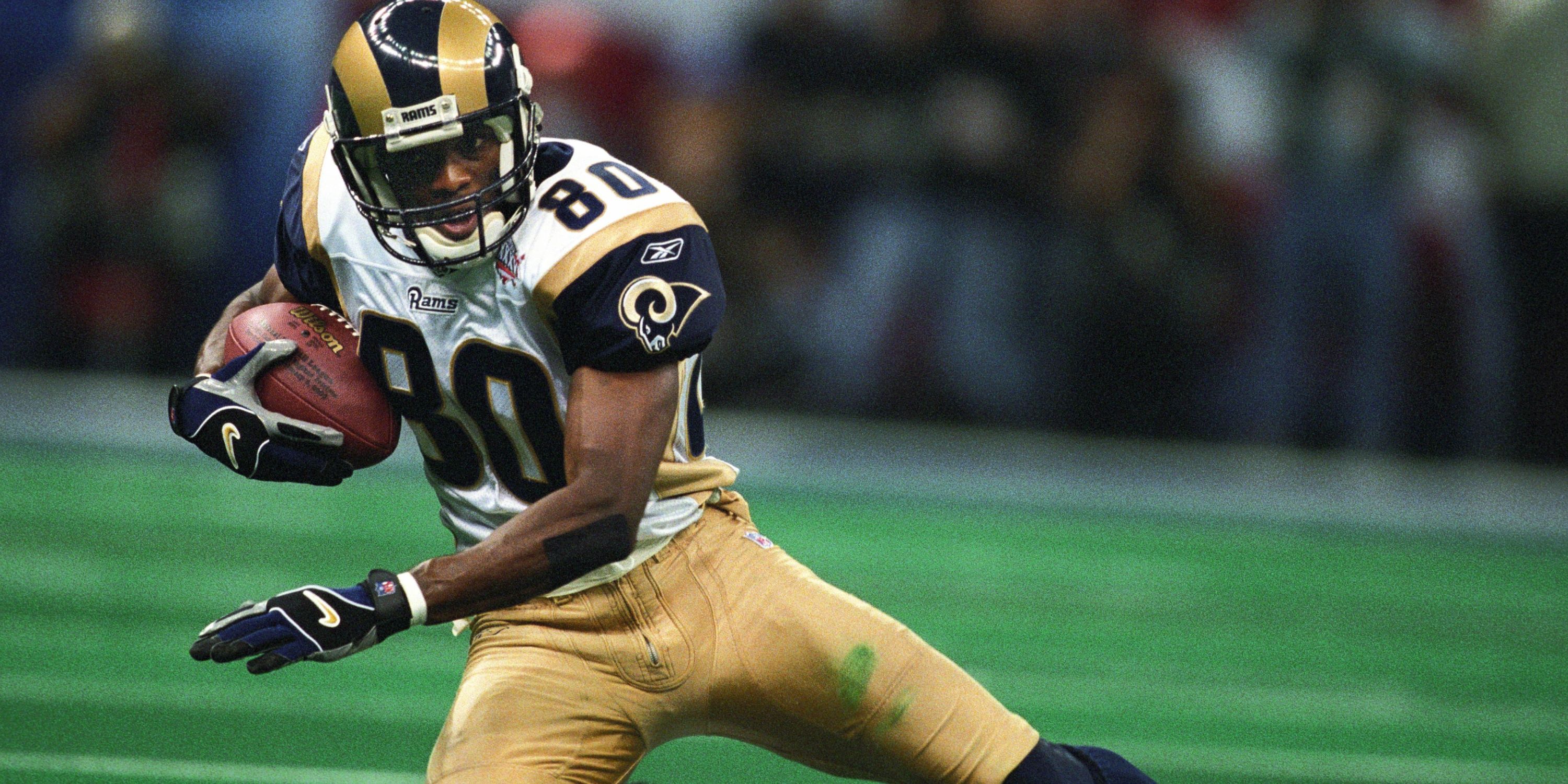
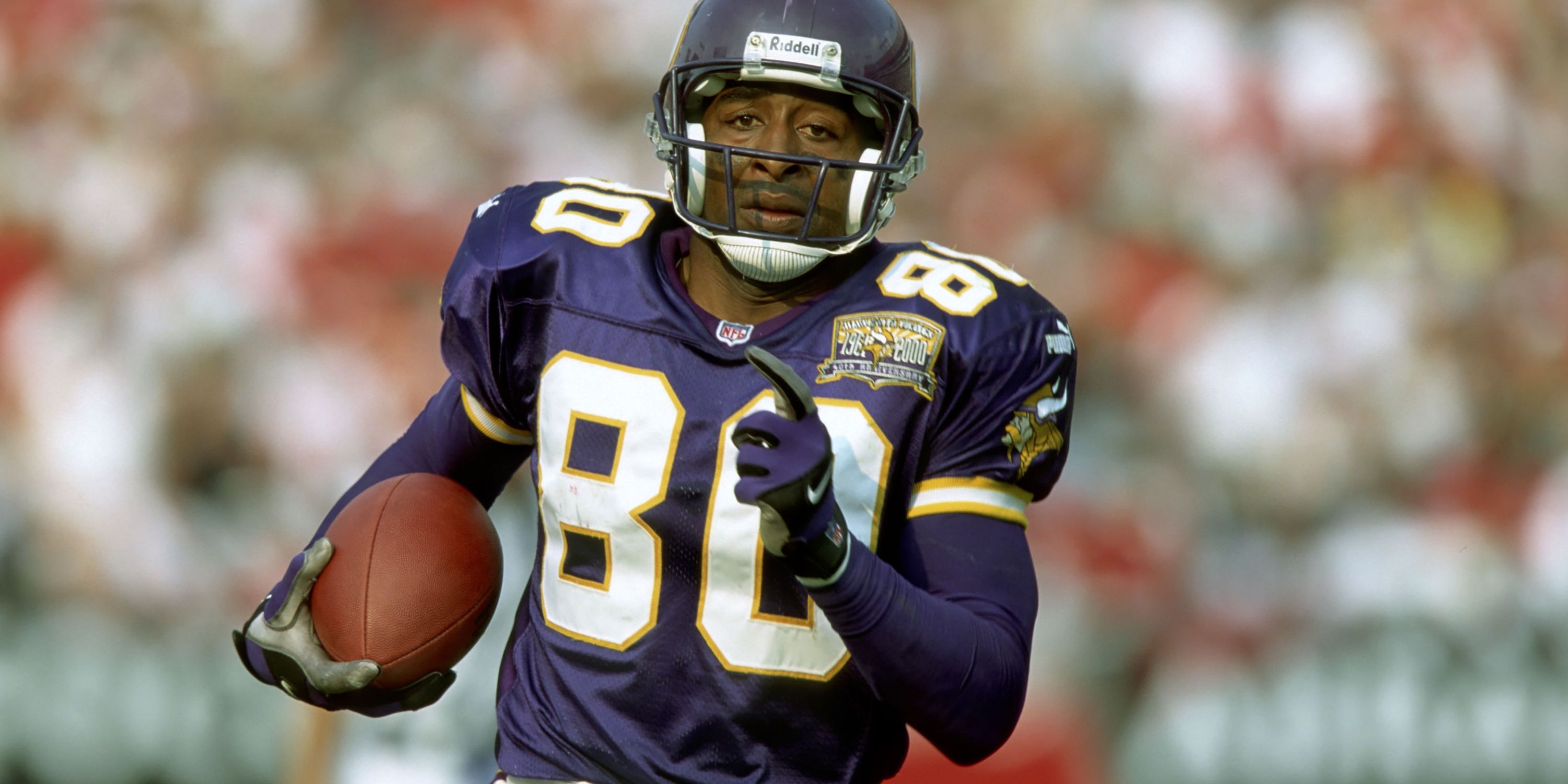
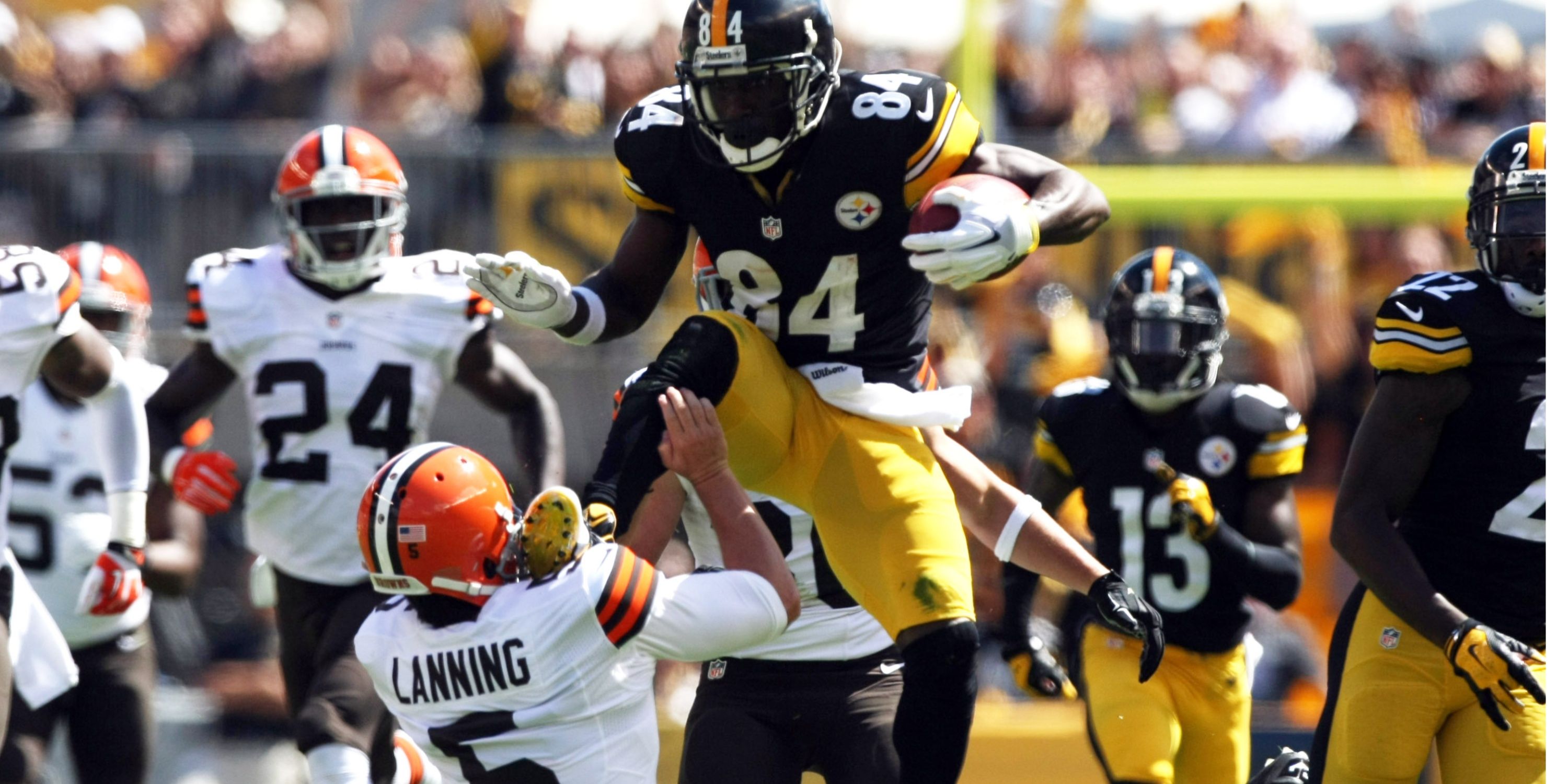
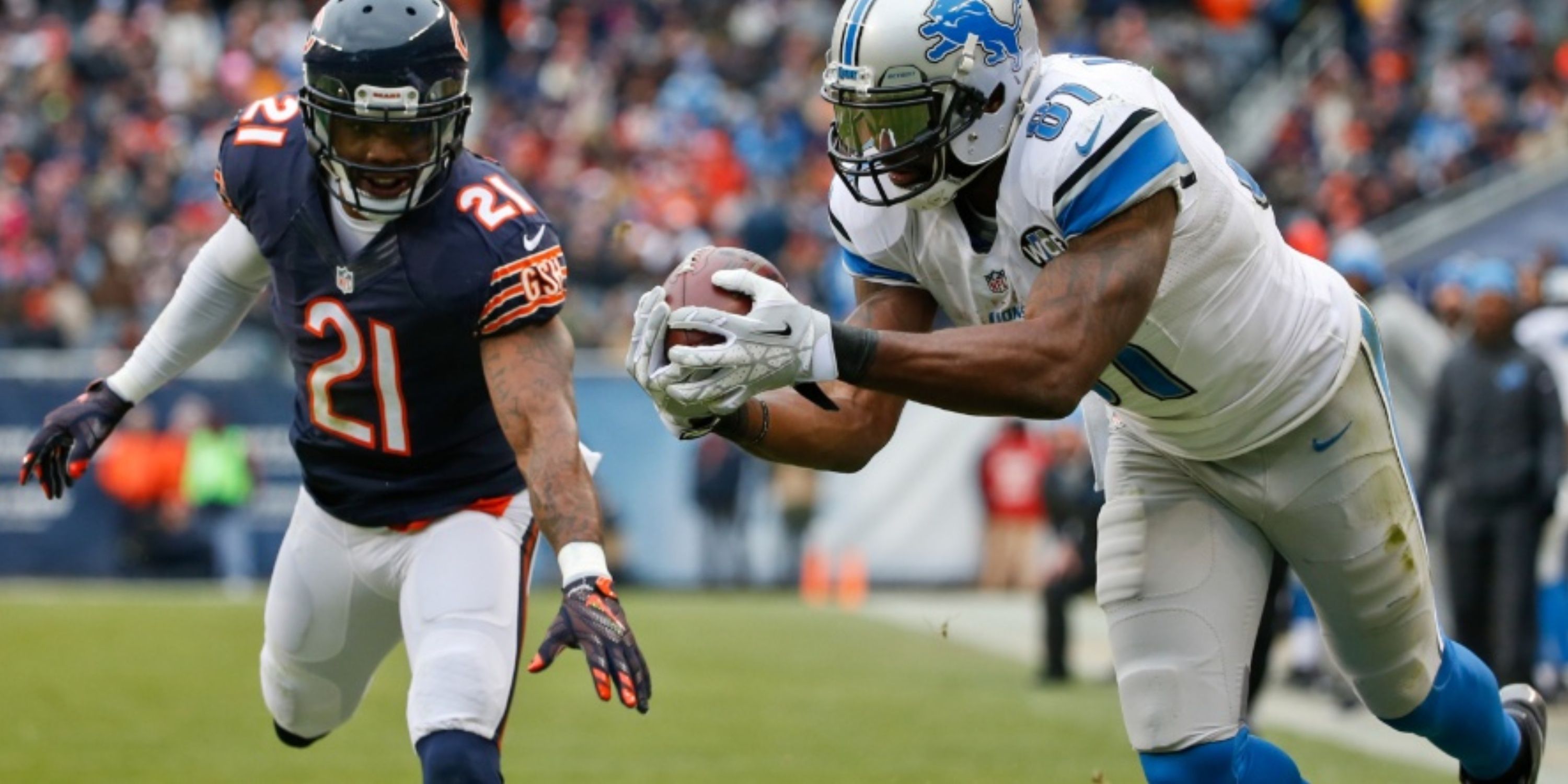
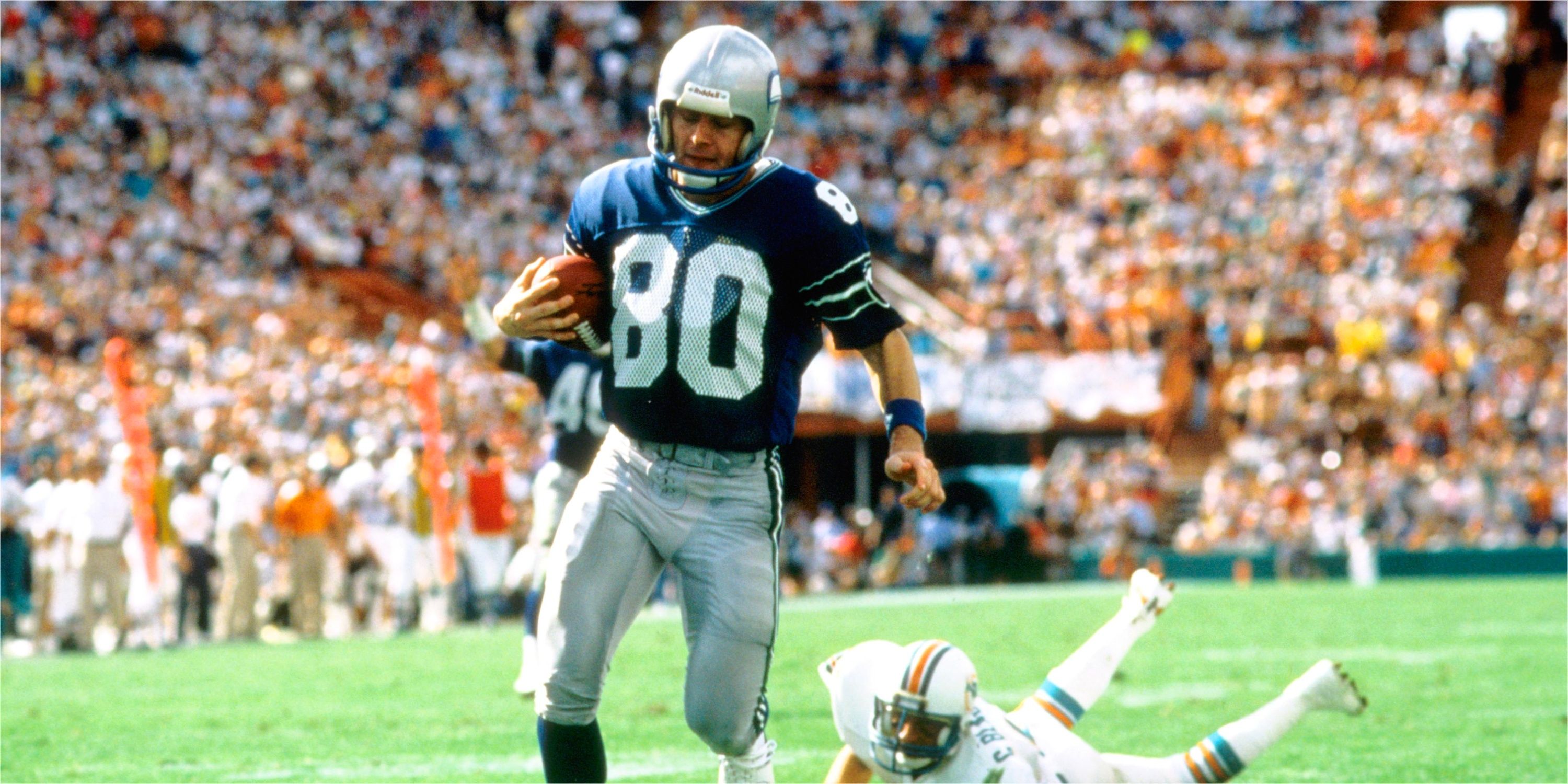
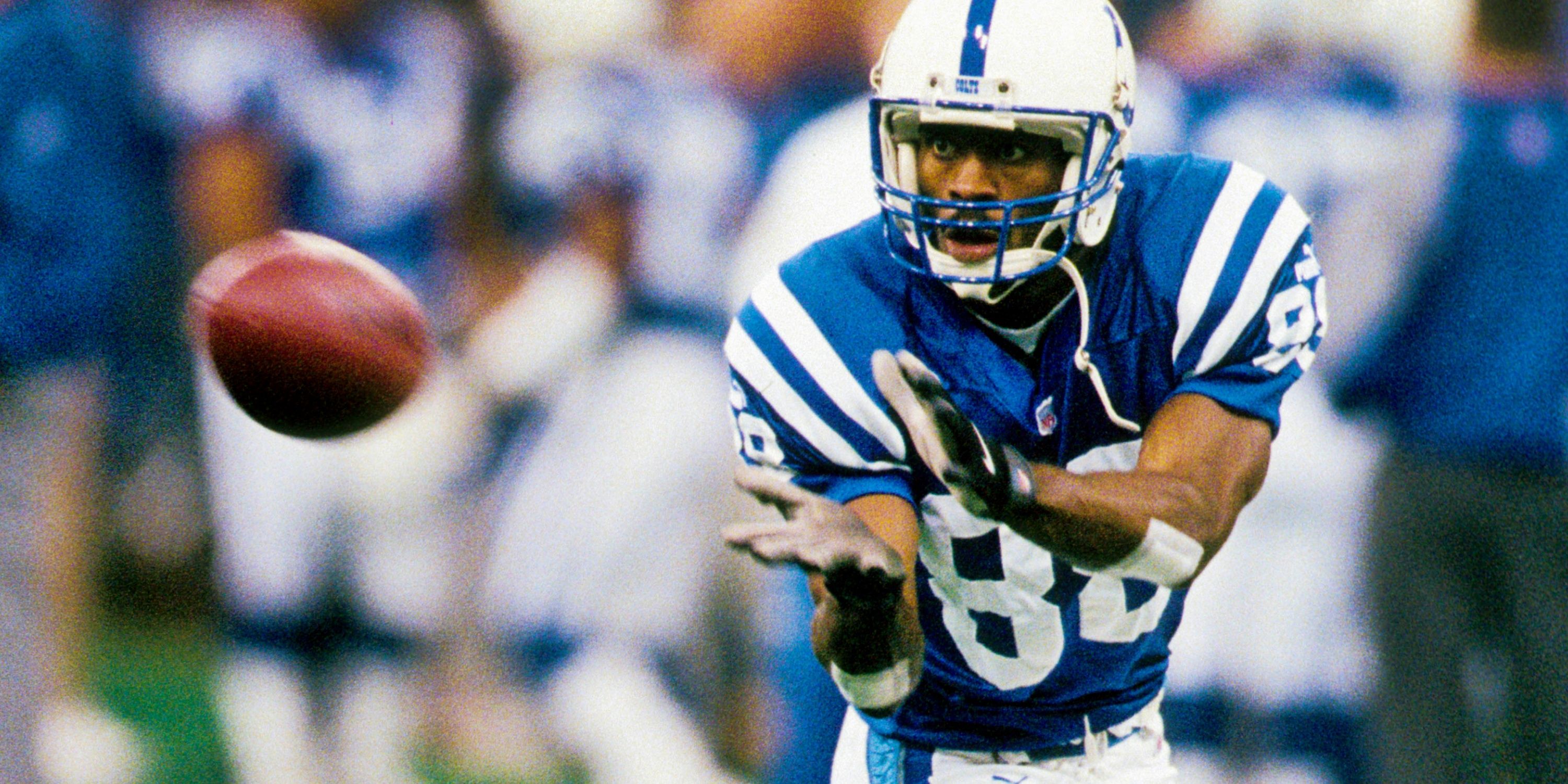
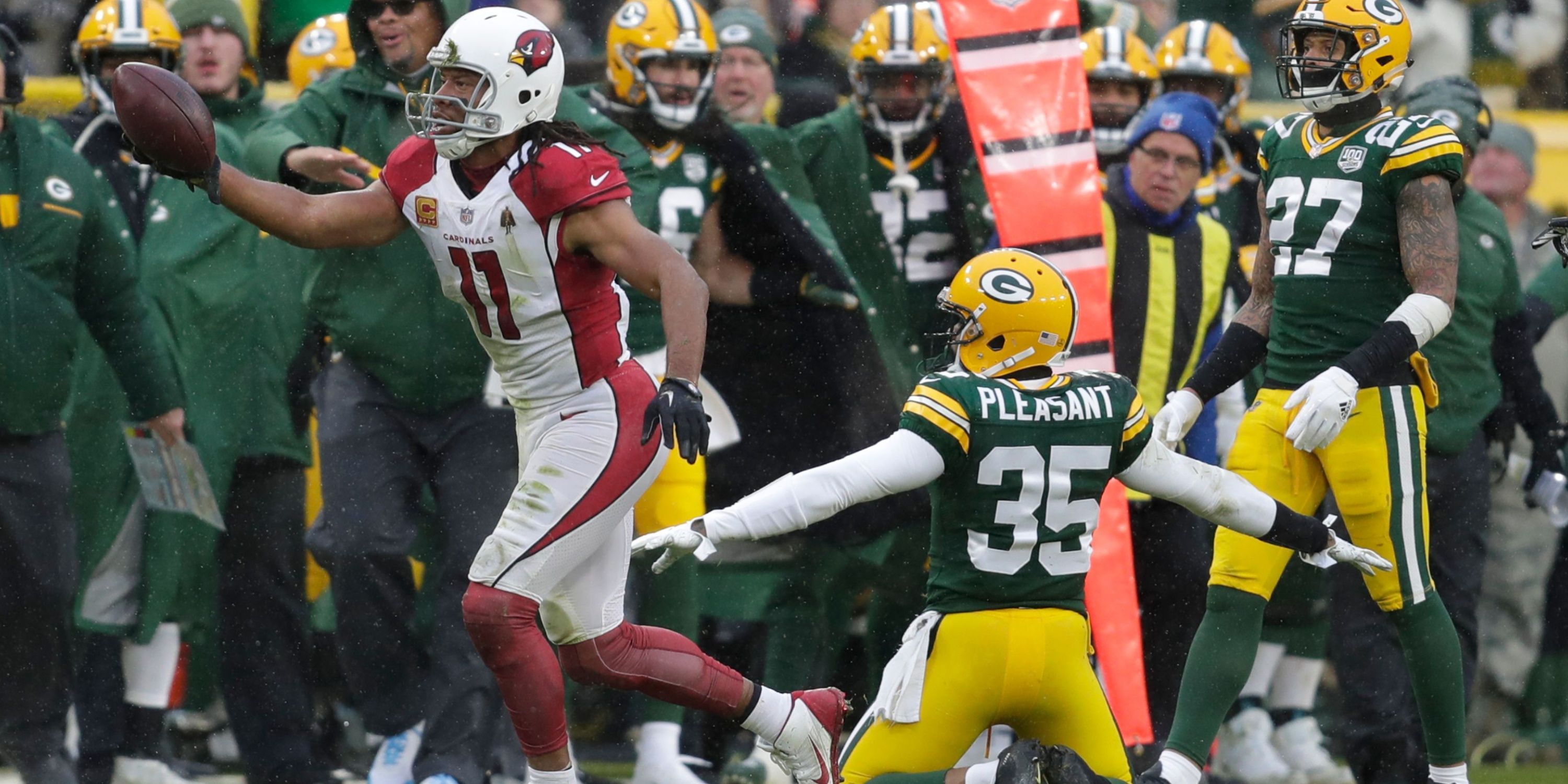
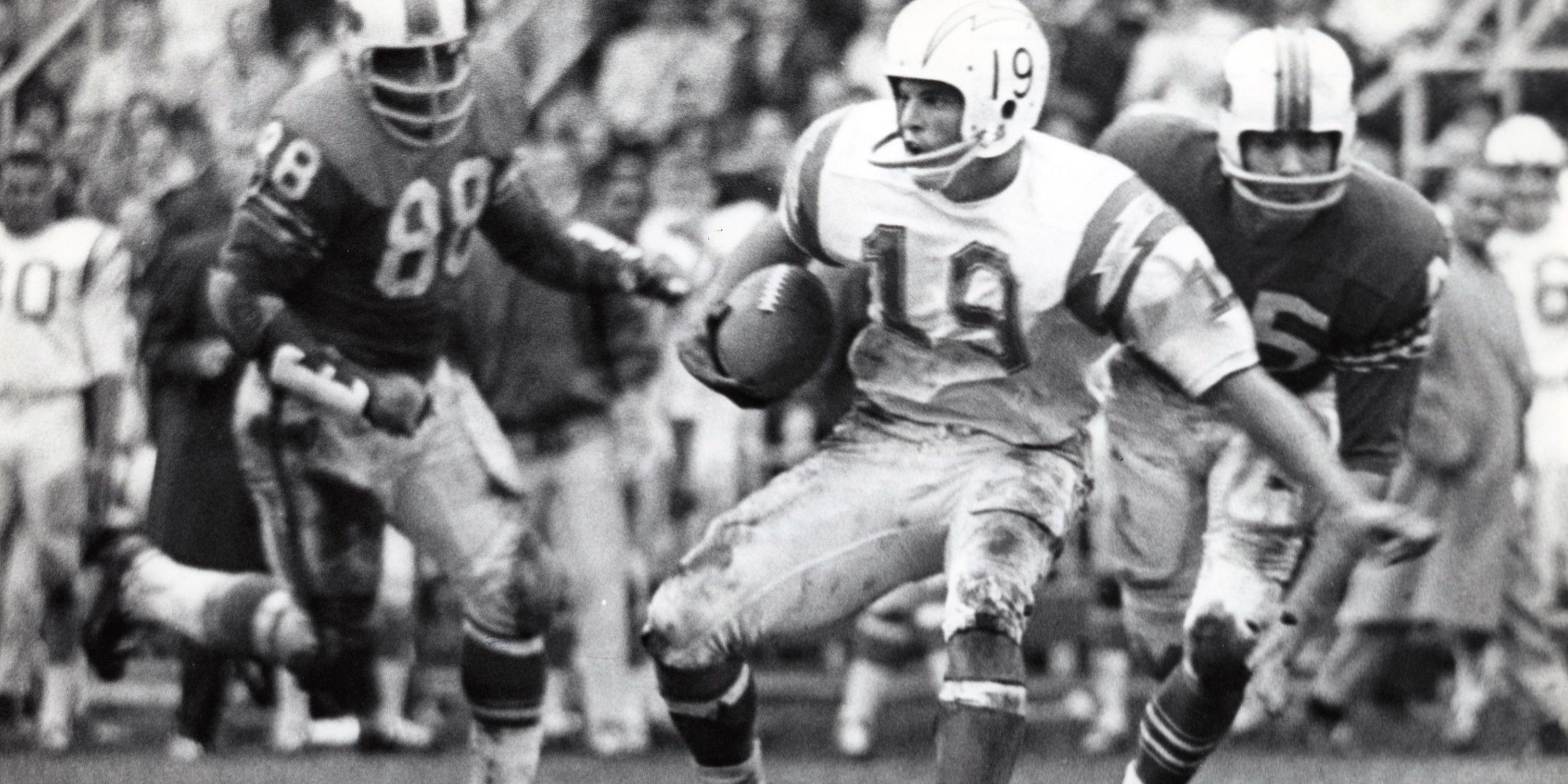
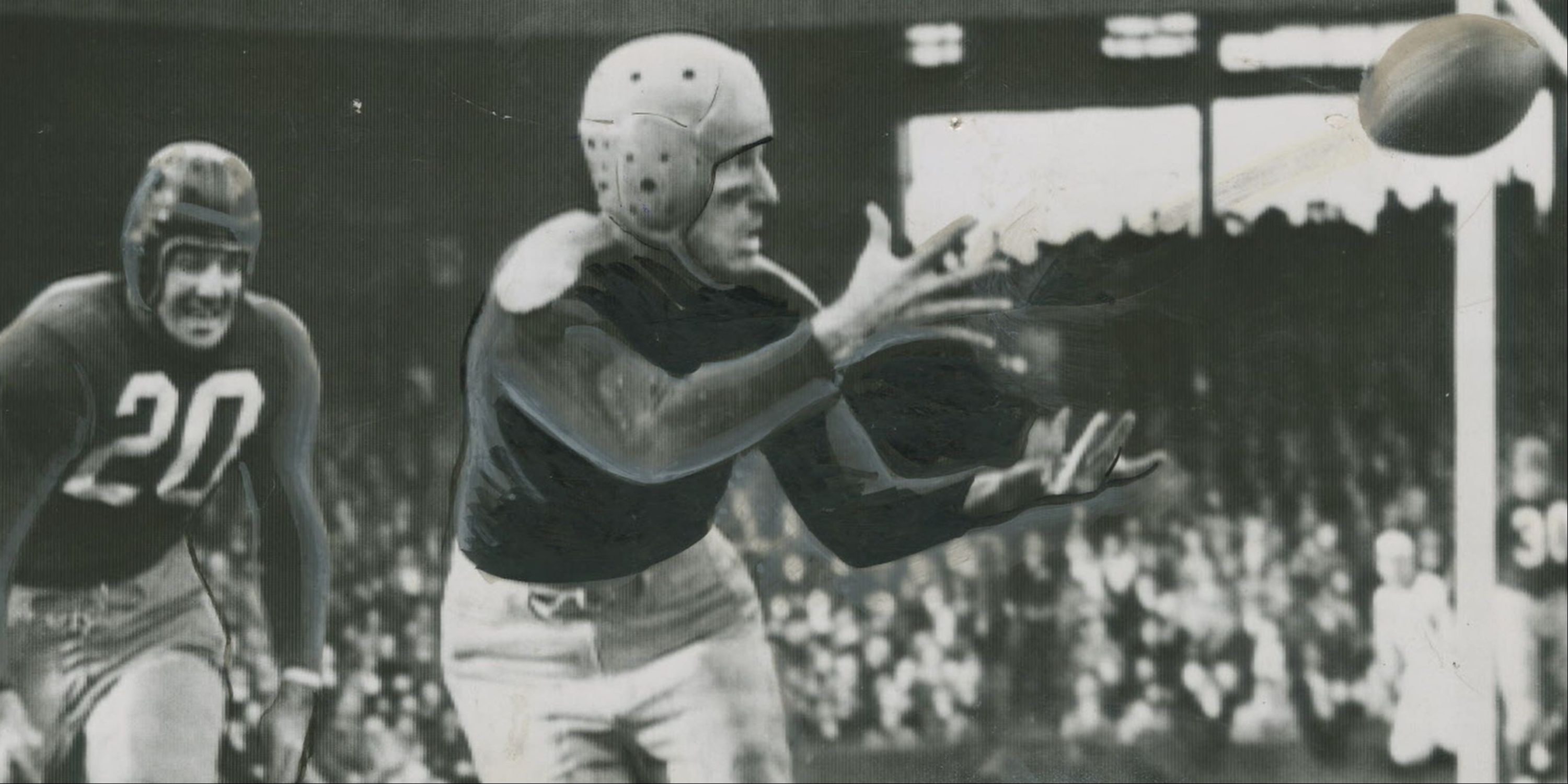
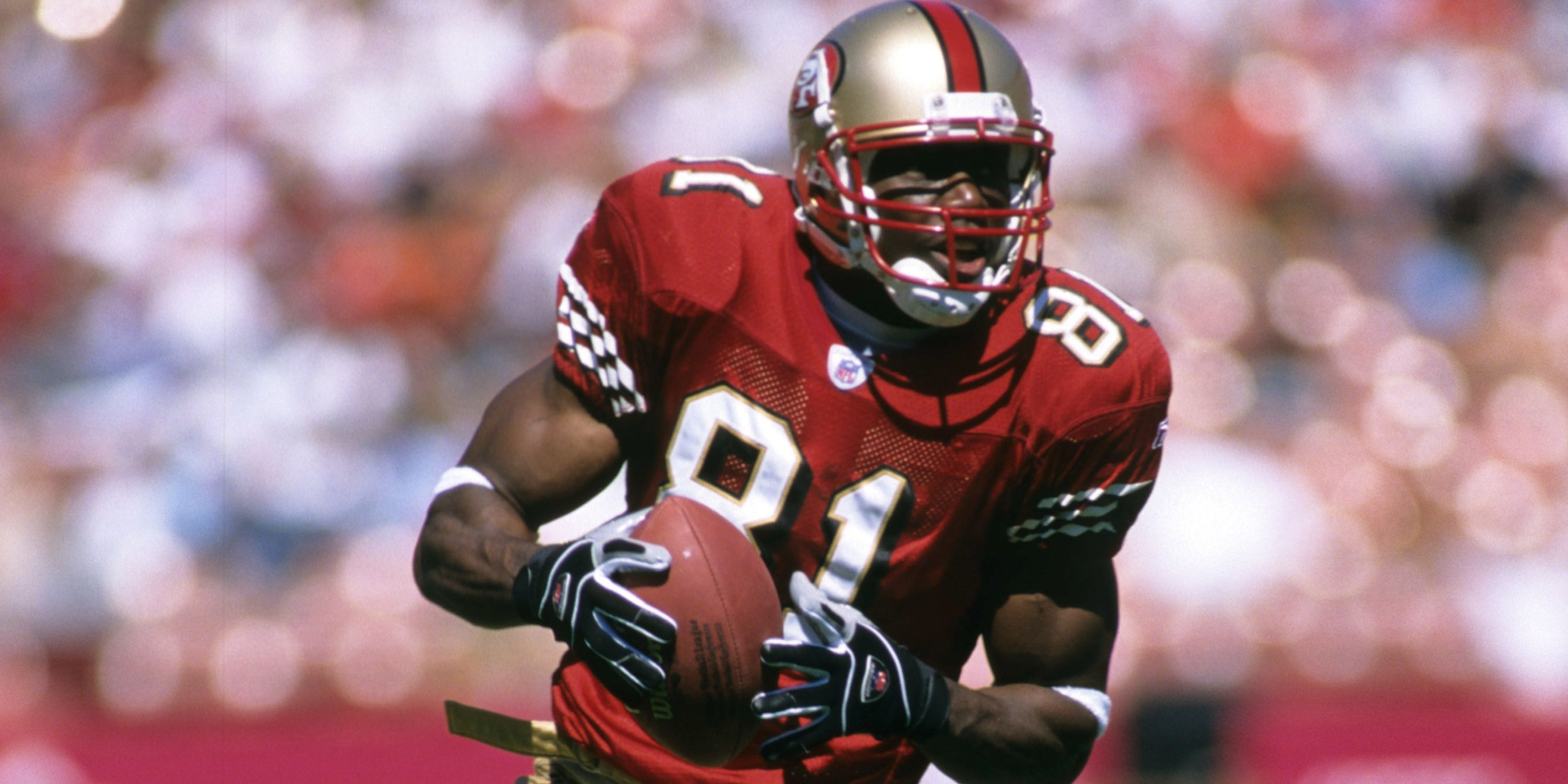
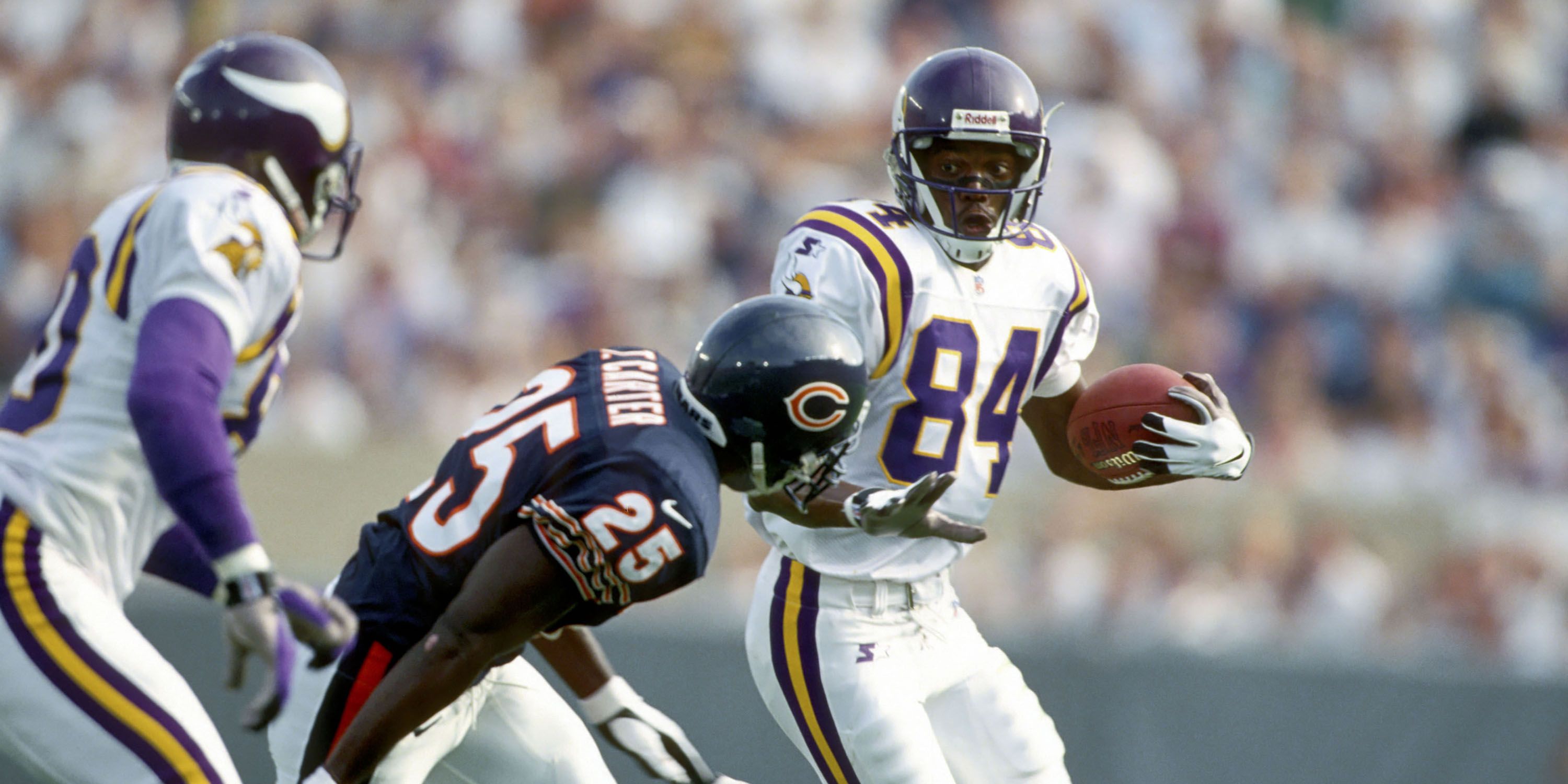
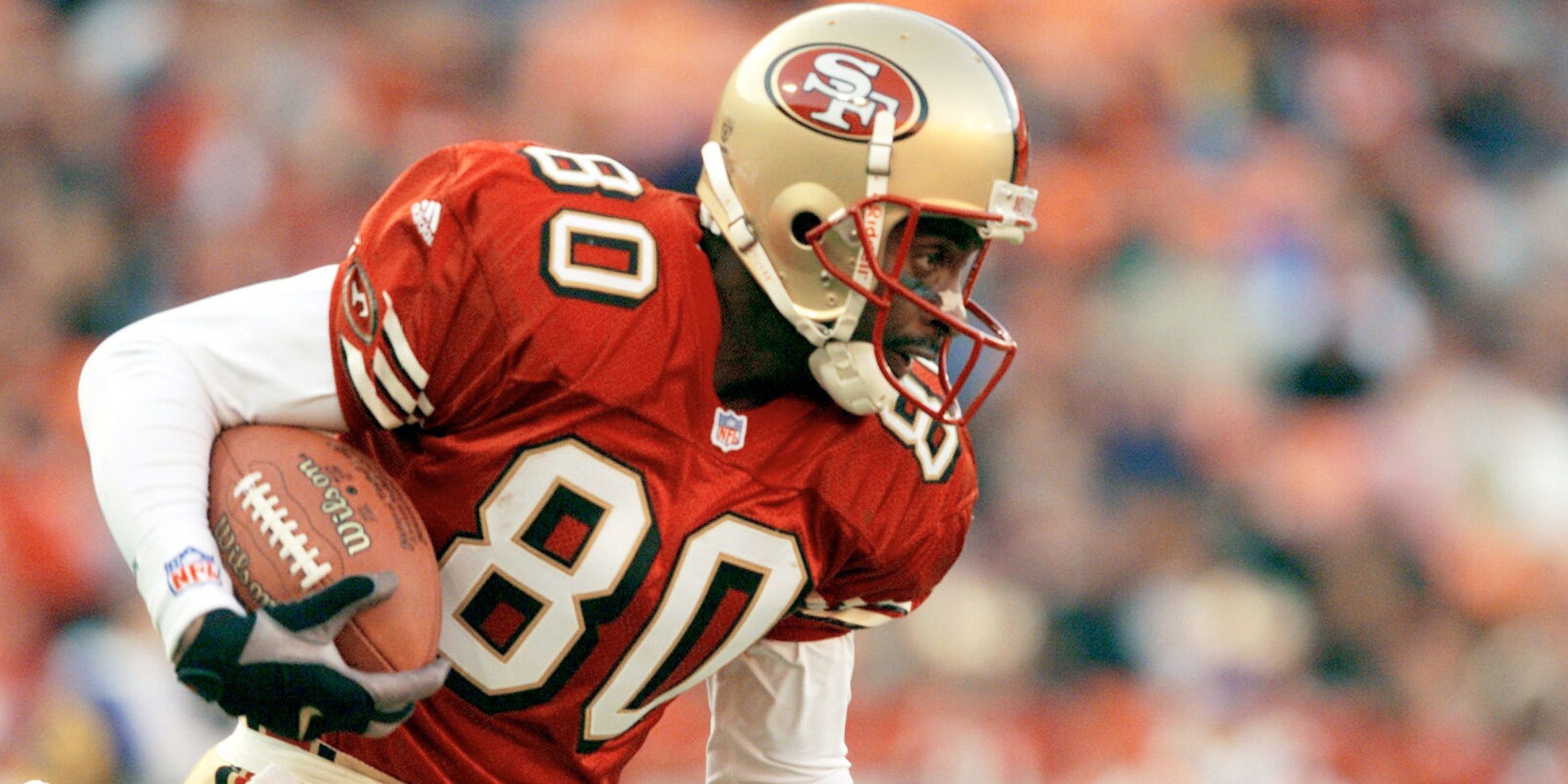
Leave a Reply